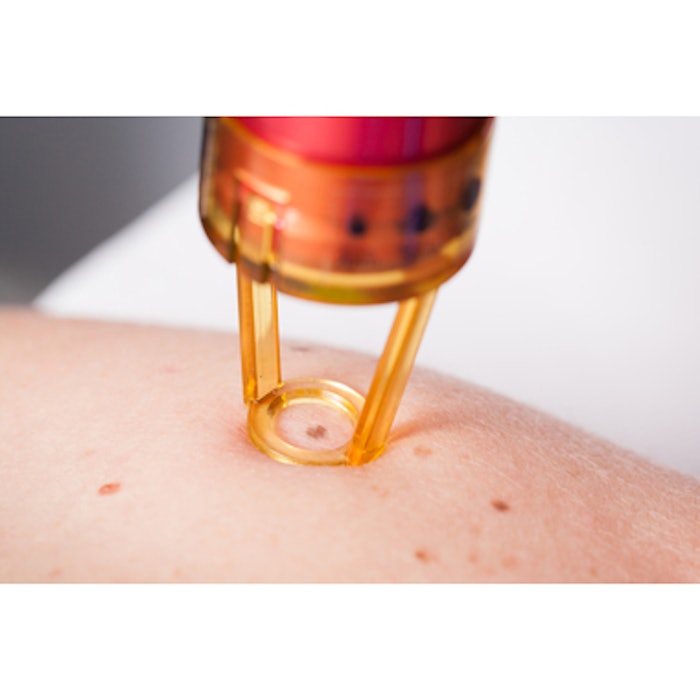
Using current recommended laser settings but doubling the pulses per treatment session can speed clearance of epidermal pigmented lesions (EPLs) with no increased risk of complications, according to the findings of a recent study published in Lasers in Surgery and Medicine (November 2018). Jessica G. Labadie, MD, and Aleksandar L. Krunic, MD, PhD, treated 36 subjects (27 females, 9 males; skin types I–IV) with benign facial EPLs using a long pulsed dye laser (LPDL) with a compression handpiece. Each lesion received two back‐to‐back pulses using the same settings tyipically used for single-pulse sessions (fluence of 9–12 J/cm2, 1.5 milliseconds duration and 7 mm spot size). If needed, the subject underwent a second session four to eight weeks later.
Independent reviewers evaluated pre- and postprocedure photos and graded lesion clearance on a Likert scale as: 1 = poor (<25 percent clearance); 2 = fair (25–50 percent); 3 = good (51–75 percent); and 4 = excellent (>75 percent). Of the 36 participants, 23 had excellent clearing, 10 good, 2 fair and 1 had poor clearance. There was one case of post‐inflammatory hyperpigmentation and no cases of scarring or hypopigmentation.
The authors noted that single-pulse treatment typically requires an average of four sessions. By double pulsing they were able to achieve the same outcomes without increasing complications. They concluded, “LPDL with compression continues to be a safe and effective modality for treatment of EPLs. Double‐pulsing decreases the total number of treatments needed for lesion resolution, while maintaining safety and potentially decreasing cost.”
Image copyright Getty Images











